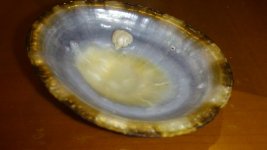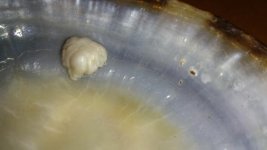last week I have found a blister pearl on a common turtle limpet on the Okinawa islands in japan.
doing some research I have yet to come across any information regarding pearls on that type of limpet, or any other limpet for that matter. being a univalve shell of that shape, seems to make the formation of pearls very rare, in fact one Japanese expert who I have contact has told me he has never heard/seen any pearls formation on a limpet before.
if you do have any photos or information regarding this type of pearl please inform me, also last but least if it is as rare as I think, does it have monetary value as a collector piece, for either pearl or shell collectors..
if it is as rare as I think, does it have monetary value as a collector piece, for either pearl or shell collectors..
p.s I misspelled the title.. should be written as a common turtle limpet
doing some research I have yet to come across any information regarding pearls on that type of limpet, or any other limpet for that matter. being a univalve shell of that shape, seems to make the formation of pearls very rare, in fact one Japanese expert who I have contact has told me he has never heard/seen any pearls formation on a limpet before.
if you do have any photos or information regarding this type of pearl please inform me, also last but least
p.s I misspelled the title.. should be written as a common turtle limpet
Attachments
Last edited:


